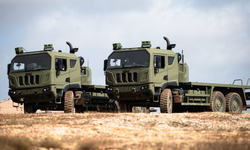Estonia has started digging anti-tank ditches in its southeastern region as part of efforts to strengthen the Baltic defense zone. The ongoing construction, led by the Estonian Defense Forces (EDF) and the Center for Defense Investments (RKIK), is expected to cost €4.4 million this year.
According to Armin Siilivask, project manager at RKIK, up to four kilometers of anti-tank ditch are currently being excavated, and plans are in place to complete up to 28 bunkers and 10 storage areas by the fall. “The locations of the bunkers are being finalized, and work is progressing on schedule,” he told local broadcaster Aktuaalne kaamera.The anti-tank ditch initiative focuses on Estonia’s heavily forested southeastern frontier, where natural watercourses do not offer the same level of protection as in other parts of the eastern border. These trenches are designed not only to impede enemy movement in wartime but also to enhance border surveillance in peacetime.
"This is not just a roadside ditch. It’s a deep trench intended to delay intrusions and give us time to respond," explained Romet Niilus, head of the Piusa border station at the Police and Border Guard Board (PPA).
The project involves both state-owned and private land. The current section is being dug on property owned by the Ministry of the Interior, while designs for future segments are still being finalized. Siilivask noted that agreements with private landowners may involve purchase, leasing, or land exchanges.
During a site visit to the village of Vinski in Võru County, excavators were seen digging the trial section, which features ditches approximately four meters wide and three meters deep.
Lieutenant Colonel Ainar Afanasjev, commander of the EDF’s divisional engineer unit, said the ditches are meant to halt and expose advancing enemy forces: “If the enemy attempts to cross or breach the ditch, they become exposed targets for our weapon systems.”
The Baltic defense zone project reflects Estonia’s broader efforts to draw lessons from the war in Ukraine and reinforce deterrence along NATO’s eastern flank.
🚧 #Estonia is constructing anti-tank ditches on its southeastern border as part of the #BalticDefenceLine. There’s no imminent military threat — but readiness is key. Serious #defence begins with serious preparation. 💪 pic.twitter.com/NOYrv5Bdjp
— MoD Estonia (@MoD_Estonia) June 19, 2025









